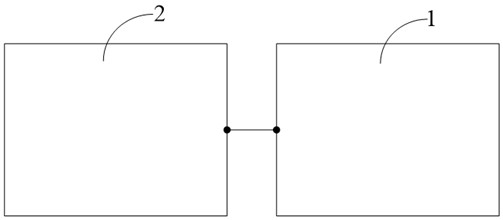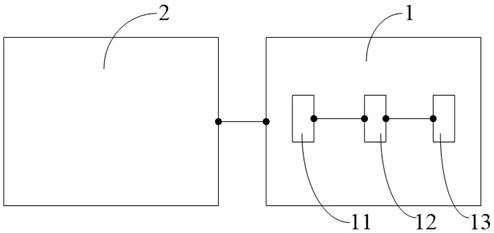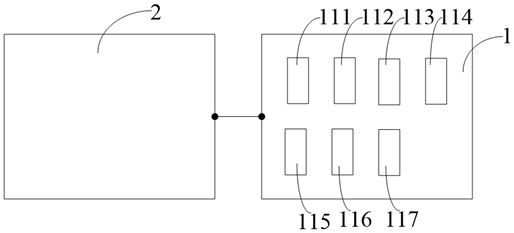Intrahepatic cholangiocarcinoma patient prognosis lifetime prediction system
A prediction system and a technique for inner bile ducts, which are applied in the field of bioinformatics, can solve the problems of predicting means of survival without ideal prognosis, and achieve the effects of stable prediction, strong reliability and high accuracy.
- Summary
- Abstract
- Description
- Claims
- Application Information
AI Technical Summary
Problems solved by technology
Method used
Image
Examples
Embodiment 1
[0077] Example 1: PMS Prediction System
[0078] The present embodiment provides a prediction system for the survival period of ICC patients, the prediction system is as follows figure 2 The prediction system shown in , and the prediction system is only based on the promoter methylation score (Promoter Methylation Score, PMS), so the prediction system is named PMS prediction system.
[0079] PMS is based on the methylation levels of 24 promoter regions, which are a collection of polynucleotide sequences shown in SEQ ID No.1 to SEQ ID No.24, and the specific information is shown in Table 1 below. Any one of the 24 promoter regions is a polynucleotide sequence with a total length of 4000 bps consisting of upstream 2000 bps and downstream 2000 bps based on the transcription initiation site.
[0080] Table 1 Related information table of 24 promoter regions
[0081]
[0082] The method for the PMS prediction system to predict the prognosis and survival period of ICC patients co...
experiment example
[0116] Experimental Example: Comparing PMS Prediction System, WCHSU Prediction System, JHUSM Prediction System, EHBSH Prediction System and AJCC TNM Staging System
[0117] The main difference between the WCHSU prediction system and the PMS prediction system is that the WCHSU prediction system uses six variables, namely ascites status, tumor size, large vessel invasion status, lymph node metastasis status, tumor differentiation degree, and CA19-9 carbohydrate antigen concentration.
[0118] The main difference between the JHUSM prediction system and the PMS prediction system is that the JHUSM prediction system uses six variables, which are age, tumor size, tumor number, lymph node status, large vessel invasion status, and liver cirrhosis. Content References:
[0119] Y Wang et al, Prognostic Nomogram for Intrahepatic Cholangiocarcinoma After Partial Hepatectomy, J. Clin. Oncol. 31 (2013) 1188-1195.
[0120] The difference between the EHBSH prediction system and the PMS predic...
Embodiment 2
[0129] Example 2: WCHSU-PMS Prediction System
[0130] This embodiment provides a prediction system for prognosis and survival of ICC patients. PMS is added as a new variable to the WCHSU prediction system to obtain a WCHSU-PMS prediction system. The WCHSU-PMS prediction system is as follows image 3 The prediction system shown in , which has seven variables, are: PMS, ascites status, tumor size, macrovascular invasion status, lymph node metastasis status, tumor differentiation degree, and CA19-9 carbohydrate antigen concentration.
[0131] The method for WCHSU-PMS prediction system to predict the prognosis and survival period of ICC patients includes the following steps:
[0132] S1. Provide an isolated sample of an ICC patient, perform genome-wide extraction, construction of a WGBS library, WGBS sequencing, and data processing of the WGBS sequencing result on the isolated sample, to obtain the formazan of any one of the 24 promoter regions. Basic level;
[0133] S2, using...
PUM
 Login to View More
Login to View More Abstract
Description
Claims
Application Information
 Login to View More
Login to View More - R&D
- Intellectual Property
- Life Sciences
- Materials
- Tech Scout
- Unparalleled Data Quality
- Higher Quality Content
- 60% Fewer Hallucinations
Browse by: Latest US Patents, China's latest patents, Technical Efficacy Thesaurus, Application Domain, Technology Topic, Popular Technical Reports.
© 2025 PatSnap. All rights reserved.Legal|Privacy policy|Modern Slavery Act Transparency Statement|Sitemap|About US| Contact US: help@patsnap.com



